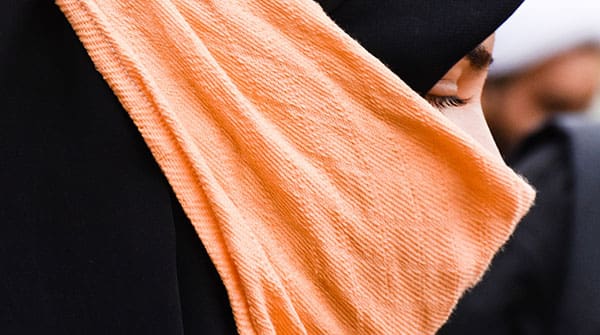Pre-Islamic Arab society is the root cause of Islamic fundamentalism’s hostility toward women
 If Canadians wish to understand the diverse sects within Islam and why some, such as Hamas and other fundamentalist versions, have little respect for women – whether Islamic or Jewish women raped and captured in the Hamas attack on Israel in early October – it helps to understand pre-Islamic Arab society and various strains in Islam ever since.
If Canadians wish to understand the diverse sects within Islam and why some, such as Hamas and other fundamentalist versions, have little respect for women – whether Islamic or Jewish women raped and captured in the Hamas attack on Israel in early October – it helps to understand pre-Islamic Arab society and various strains in Islam ever since.
Some history: Before the advent of Islam, some 1,450 years ago, Arabs used to bury their newborn girls alive. As well, women were treated as chattel to be bought and sold and were considered to have no soul.
Classical Islam in the seventh century ordered Arab men to stop burying their girls and gave them new rights, including the right to ask for marriage, to divorce, keep their maiden name, and also keep their earnings.
After Mohammad died, variants of political Islam began to replace traditional/spiritual Islam with clergy-led laws enacted to control the public and women in particular. Known as Sharia laws or Fiqh, they date from roughly the second half of the eighth century A.D.
 Photo by أخٌفيالله |
| Related Stories |
| Faith brings out the best in us
|
| Religious ignorance is on the rise but we can combat it in our schools
|
| Bringing the Architect of the Holocaust to justice
|
Relative to women, Sharia laws treated women as second-class citizens, arguably in opposition to the rights given to them by the Quran. For example, one Quranic verse states, “And they (the women) have rights similar to those (of men) over them” (Quran 2:229) or the one that especially resonates with me: “O people be aware of your Lord, Who created you (humans) from a single soul (nafs) and created therefrom mates for you” (Quran 4:2).
Over time, orthodox and extremist Muslims passed off sharia laws as divinely inspired but were, in fact, a throwback to pre-Islamic Arab societies.
Fast-forward to today, and countries and regimes that adhere to sharia law, be they in Saudi Arabia or Iran, have metaphorically buried women alive again: this is where the harsh treatment of women originates.
This view of women also explains why Israeli women were seen and treated as objects, as chattel, as property and as sub-human vis-à-vis the Hamas men who raped their way through various Israeli communities on Oct. 7.
But it’s not just Israeli women, teenagers and girls treated as a man’s property. According to a BBC report in 2010, three years after Hamas took power in Gaza, Hamas’ initial impulse was to imitate restrictions imposed in more fundamentalist communities, including forced head and body coverings. The group also threatened to create teams of women to patrol the streets to enforce such stricture.
The attempt failed. One Gaza woman, Jihad Roston, told the BBC, “People here didn’t accept it because (they viewed it as) a personal freedom. Even some men in Gaza refused.” But as Roston noted, Hamas “destroyed the reputation of Islam by saying we’re doing this because it is religion.”
The attempt to repress women, though, has not failed in countries such as Iran after the 1979 Revolution or, more recently, in Afghanistan after the return to power of the Taliban; repression in both countries is a constant factor of daily life.
In Iran, for example, and despite recent protests, women still struggle for the simple right to walk the streets with their hair showing. Consider Mahsa Amini, the 22-year-old Iranian woman who died in a Tehran hospital in September 2022 under suspicious circumstances. The Guidance Patrol, the Iran government’s religious morality police, arrested Amini for allegedly not wearing the hijab in accordance with government decrees.
Such “sin” (according to the ruling clergy) means, as with Amini, that women can be arrested for the smallest of “misdemeanours” – wearing lipstick or nail polish. Their punishment can include being whipped, prisoned, raped, tortured and even killed. Some have disappeared, never to be seen again, and there is no recourse to justice for these women.
Unsurprisingly, Hamas and Hezbollah, direct ideological exports of Iran, reflect the anti-women ideology of the late Iranian cleric and ruler Ayatollah Khomeini. Due to constant brainwashing, issues like Jihad, Shahadat (dying for the cause), and sacrificing their children come naturally to such extreme movements as per the dictated doctrine.
Is there hope? For those who live under such regimes, one hope is that constant push-back, with support from liberal Western powers and Iranian dissidents living abroad who rally for their cause, will one day break the dam of repression.
The other bit of hope comes from the example of tolerant and secular-leaning Islamic leaders, the ones who are laudable exceptions to anti-women practices in the Muslim world.
One such is Turkey’s Kemal Atatürk, who, after the First World War, rose to power as a military leader and was president between 1923 and 1937, signalled a shift to secularism. With Atatürk’s rejection of the politicization of Islam, Islamism as a political force was marginalized, at least until recently. Still, Turks currently still have a choice to be religious or spiritual, and women still have the freedom to choose their own paths, be it on matters of dress, education, career and marriage.
Another example is the Ismailis, a highly-educated, progressive community that follows a Western-educated Imam who emphasizes community service and obeying the law of the land where they choose to live. Hence, unlike the virulent politicized Islamic sects, Ismailis have always kept the radical clergy at bay, and Ismaili women have possessed equal rights relative to other Muslim sects.
Put another way, the hope for Muslim progress is found in emulating Ismaili practice and in the historic secular governance of Kemal Atatürk. Therein lies the possibility of mutual accommodation between Islam, Israel and the rest of the West.
Raheel Raza is a Senior Fellow with the Aristotle Foundation for Public Policy and president of the Council for Muslims Facing Tomorrow.
For interview requests, click here.
The opinions expressed by our columnists and contributors are theirs alone and do not inherently or expressly reflect the views of our publication.
© Troy Media
Troy Media is an editorial content provider to media outlets and its own hosted community news outlets across Canada.
